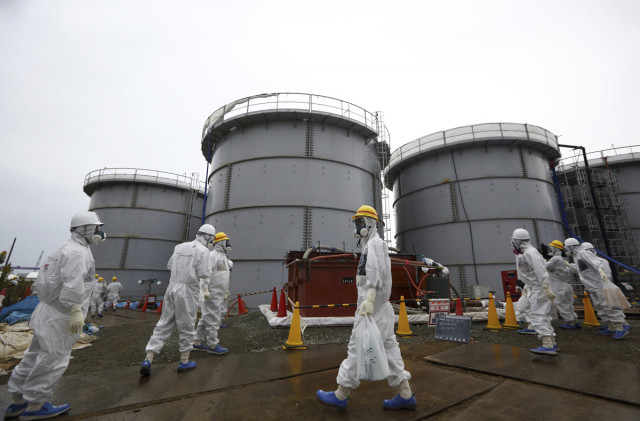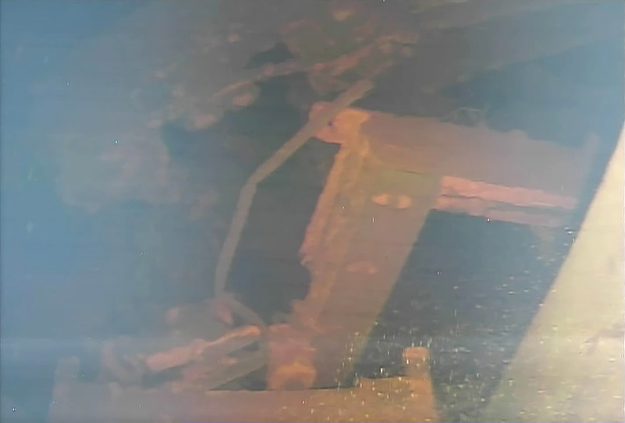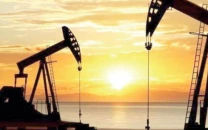Underwater robot probes inside Fukushima reactor
Locating the fuel debris is part of the decommissioning process for the plant expected to take decades

Members of the media and Tokyo Electric Power Co employees wearing protective suits and masks walk past storage tanks for radioactive water in the H4 area at the tsunami-crippled TEPCO Fukushima Daiichi nuclear power plant in Fukushima prefecture, in this file picture taken November 7, 2013. PHOTO: REUTERS
A massive undersea earthquake on March 11, 2011 sent a huge wave barrelling into Japan's northeast coast, killing more than 18,500 people, and sending three reactors into meltdown at the plant in the worst such accident since Chernobyl in 1986.
 This frame grab taken from handout video from an underwater robot and provided by Japan's International Research Institute for Nuclear Decommissioning (IRID) on July 19, 2017, shows a part of the platform inside reactor No. 3 at Fukushima Dai-ichi nuclear power plant in Okuma, Fukushima prefecture. PHOTO: AFP
This frame grab taken from handout video from an underwater robot and provided by Japan's International Research Institute for Nuclear Decommissioning (IRID) on July 19, 2017, shows a part of the platform inside reactor No. 3 at Fukushima Dai-ichi nuclear power plant in Okuma, Fukushima prefecture. PHOTO: AFPTokyo Electric Power Co (TEPCO) in February sent a remote-controlled robot into one of three damaged reactors where radiation levels have hit record highs.
But the mission was aborted at the No. 2 reactor after the robot could not reach its target destination beneath a pressure vessel through which nuclear fuel is believed to have melted as the robot had difficulty moving.
Locating the fuel debris is part of the decommissioning process for the plant expected to take decades.
 This frame grab taken from handout video from an underwater robot and provided by Japan's International Research Institute for Nuclear Decommissioning (IRID) on July 19, 2017, shows a part of the platform inside reactor No. 3 at Fukushima Dai-ichi nuclear power plant in Okuma, Fukushima prefecture. PHOTO: AFP
This frame grab taken from handout video from an underwater robot and provided by Japan's International Research Institute for Nuclear Decommissioning (IRID) on July 19, 2017, shows a part of the platform inside reactor No. 3 at Fukushima Dai-ichi nuclear power plant in Okuma, Fukushima prefecture. PHOTO: AFPOn Wednesday, TEPCO sent a robot measuring 13 centimetres (5.1 inches) wide and 30 centimetres long to the No. 3 reactor and conducted another inspection on Friday, a spokesman said.
But the company has yet to find the fuel debris.
"Today the robot went deeper inside the containment vessel" of the reactor, he said, referring to the Friday probe, adding that TEPCO will analyse the images.
The Japanese government said in December that it expects total costs including compensation, decommissioning and decontamination to reach 21.5 trillion yen ($192.5 billion) in a process likely to take at least four decades as high radiation levels slow operations.



















COMMENTS
Comments are moderated and generally will be posted if they are on-topic and not abusive.
For more information, please see our Comments FAQ